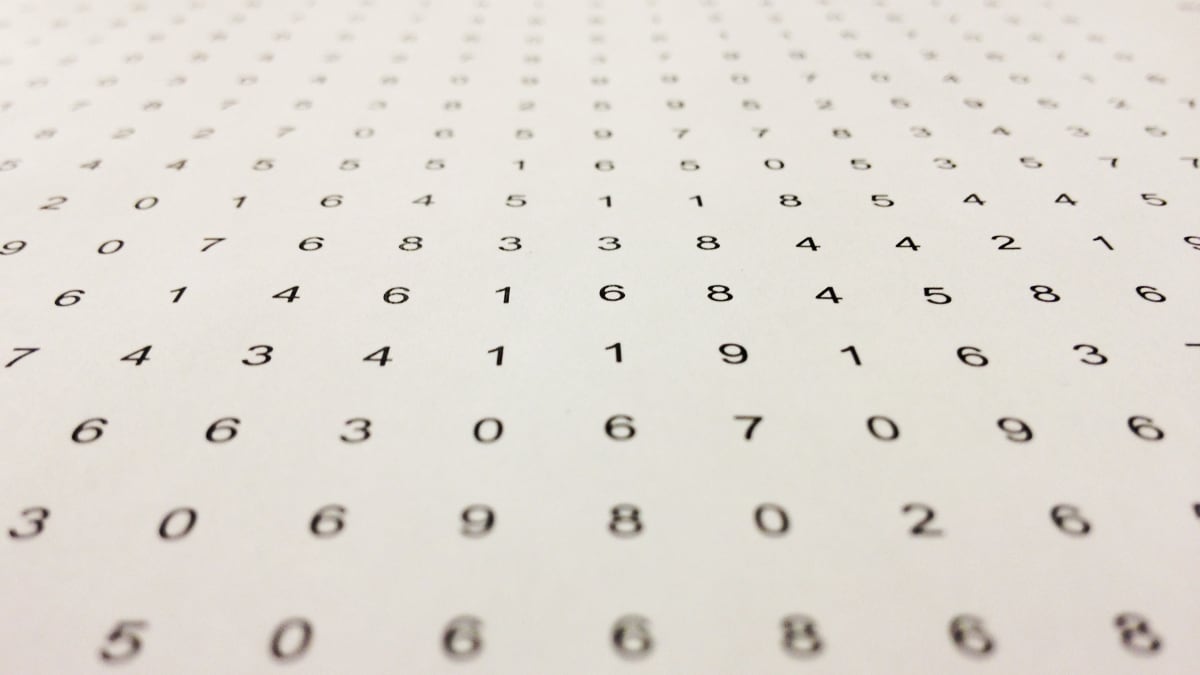The International Man of Memory was on the stage, and the subject was the U.S. House of Representatives.
Given the name Daniel Webster, he said, “Daniel Webster, let me see …” He paused. “This is a pretty difficult demonstration—it’s actually thousands of pieces of data—so if I get something right, maybe clap. If I get something wrong … let’s ignore it if I get it wrong. So, Daniel Webster is from Florida, 8th District, he is a Republican, and he serves on the Committee on Rules.” The audience clapped.
It was a moment of performance after a morning of competition at the annual USA Memory Championship, which are held in a large events room in the Con Edison building just off of New York City’s Union Square.
Chester Santos—the International Man of Memory and 2008 champion—was not a competitor this year. But I was. And I can comfortably say I am not an international man of memory.
The world of competitive memory was made famous by Joshua Foer, whose book Moonwalking with Einstein: The Art and Science of Remembering Everything explored the science of memory and detailed how he trained for—and won—the 2006 American memory championship. I wanted to see if I could put Foer’s fascinating advice to the test.
Foer trained for about a year, but I did not have that kind of time. Undeterred, I suited up and, on a Saturday in late March, took my place alongside 45 other mental athletes (as the contestants are called), all of whom sat behind rows of folding tables. The entire thing felt something like an SAT test with media coverage.
Among the participants was Ola Abdelrahman, a 15-year-old from New Jersey, who was taking the memory plunge for the second time. Her advice? Focus as much as possible during each event. Beyond that, “I think just do your best,” she said. “Don’t get, like, too stressed about it.”
To my right was Nathan Bar-Fields, 33, from Galveston. Bar-Fields had served two years in the Navy and now worked two jobs back in Texas, one of them as a night auditor at a hotel. He told me that he was dyslexic, and that the techniques needed in competitive memory squared with the visual way his mind already worked.
The first event of the day was names and faces. We were each given a packet containing 117 photos of people, along with their first and last names. We had15 minutes to memorize as many names as we could. My preparation? Minimal.
Before the competition, I had spoken with Nelson Dellis, 28, the reigning memory champ (and this year’s eventual winner), who had encouraged me to use a system that finds an “anchor point” in the image—something about the person’s face, or the background, or anything else—and connect the anchor with the name using imagery.
One of my photos was a young girl named Sandre with two blonde pigtails. I told myself that I would associate her sandy blond hair with her name, and that worked. In another, I associated a man named Luke with the word puke, vaguely imagining that he had puked on his dark top.

In all, I remembered 24 of the 234 names I saw. Compared to the top competitors, this was abysmal. Hannan Khan, a high-schooler from Pennsylvania, remembered 158. How did he do it? “It’s about creating associations,” he said. Khan’s process—like Dellis’s—involves “creating little anecdotes about each person, even if they’re not real.” One man in the packet, named Travis, had on a cowboy hat, so Khan pictured the man talking in a southern accent and saying his name.
I asked Khan if he thought he had a good memory. “I feel I have a decent memory, but if you ask anybody in this competition they’ll tell you that it’s all technique” and practice, he said. “Anyone can do it, honestly.”
After sitting out another event, I was geared up for the cards—in part because it seemed fun, and also because it was the event I’d trained for the most. It consisted of two rounds in which contestants memorized the order of as many playing cards as they could in five minutes. In the second round I memorized 25 cards, a personal record.
Here’s how I did it (thanks to Dellis and Foer): First, I associated each card with a person—this is what took the most effort, since I had to memorize them in advance. For most cards, the person is based off of its two-letter initials. So, for instance, the Ace of Spades becomes Arnold Schwarzenegger. Second, each person has to be doing something. So Arnold’s action, in my mind, was flying a fighter jet. (For a lot of my training, I used associations that had been suggested by Nelson and by a “boot camp” guidebook written by a PR firm representing a supplement called Brainstrong, one of the event’s sponsors.)
I had the name, I had the action, now I just needed to memorize the order. To do that, you picture the people associated with the cards in an environment you know well: what’s known as a “memory palace.” A memory palace has to have locations where you mentally place the things you are trying to remember. To my mind it’s the most intriguing concept in Foer’s book. The trick is to use a landscape, or a house, that you can picture easily. Why does this work so well? According to Todd Sacktor, professor of physiology, pharmacology and neurology at SUNY Downstate Medical Center, and an expert on memory, it’s because this type of memory is encoded in the brain’s hippocampus, and evolutionarily speaking—going back “probably before mammals” or earlier, Sacktor said—the job of the hippocampus has been “for place, for memorizing the place of where things are.” In other words, picturing places comes naturally to humans.
My memory palace was my old summer camp in New Hampshire. The first location was a specific house at the far end of the camp, down by the lake, at the edge of woods. That’s where I put the people associated with my first two cards. In my round-two deck, the first two cards I had to memorize were the Jack of Hearts (Johnny Depp as a pirate), and the Queen of Hearts (my Mom, using a pair of binoculars). To combine those two cards, I pictured Johnny Depp using a pair of binoculars in that house by the lake. It’s a memorable enough image. Near the house are some tennis courts, where I pictured Stephen Hawking (Six of Hearts) drinking a Pabst Blue Ribbon (the action I associate with a grad-school buddy, who is the Eight of Diamonds). Then, down by a little beach on the lake, was God (Seven of Diamonds) with Scooby-Doo (Six of Diamonds). And so on.

Incidentally, David Pogue, The New York Times’ popular personal-technology columnist and another competitor in this year’s competition, also went to my old summer camp, but apparently he didn’t get the same mileage out of those memories: in the final tally, Pogue placed dead last. (In his defense, he was there not as a real contestant; he was filming an episode for “Nova,” and missed the names and faces event. "I wasn't there hoping to win," he said.)
Regardless, it was challenging and fun to picture this landscape I knew so well, mentally place people along the way, and then translate those people into cards. But make no mistake: 25 cards in five minutes is child’s play. Dellis memorized an entire deck in 87 seconds.
After the morning events, I tracked down Foer, who hasn’t competed since his victory in 2006. “How’d it go this morning?” he asked. I told him about my score on names and faces. “Oh, that’s not so good,” he said. “That’s actually kind of pathetic.” (He was nicer about the cards, saying my performance was “really good.”)
I’d previously asked him what techniques had stuck with him since his victory. He said that the most useful ones were for recalling numbers and giving speeches.
“I would say a lot of this is not that useful in everyday life,” he said. “Except that the principles behind why this stuff works kind of are broadly applicable. The reason these memory techniques work is because they make you work. They are forcing you to engage really deeply with whatever it is that you’re trying to learn. To pay attention, to be mindful, to use your imagination in a way that most of us don’t normally walk around exercising.”
Even if I’d been clobbered by kids half my age, in the end I felt happy about my performance in the cards event, and I placed 33rd overall. Who cares that I couldn’t moonwalk with Einstein?





